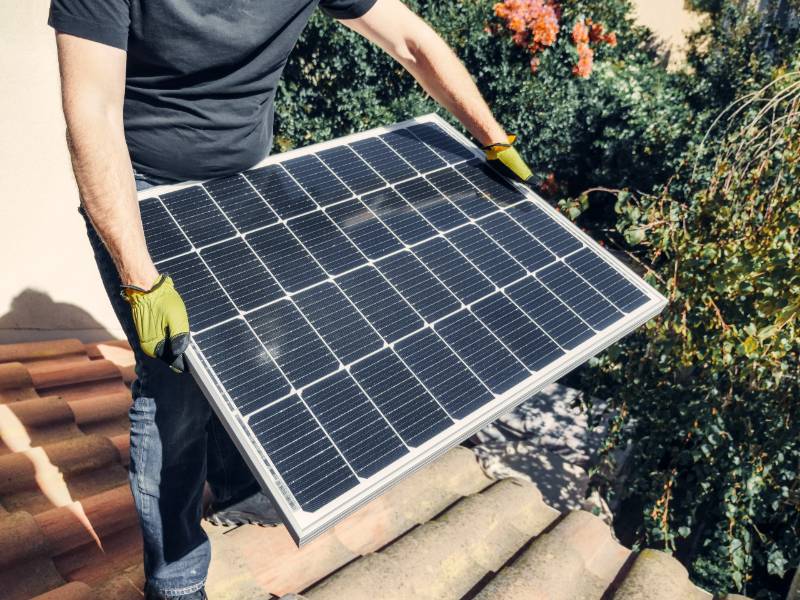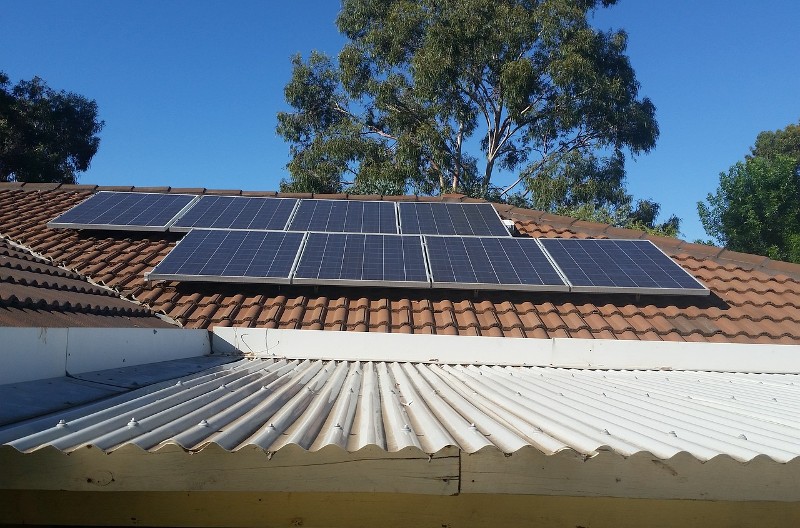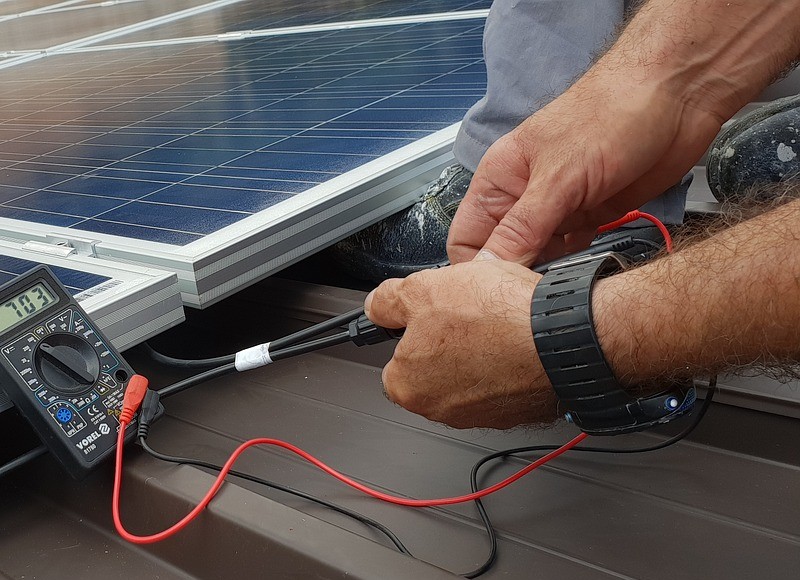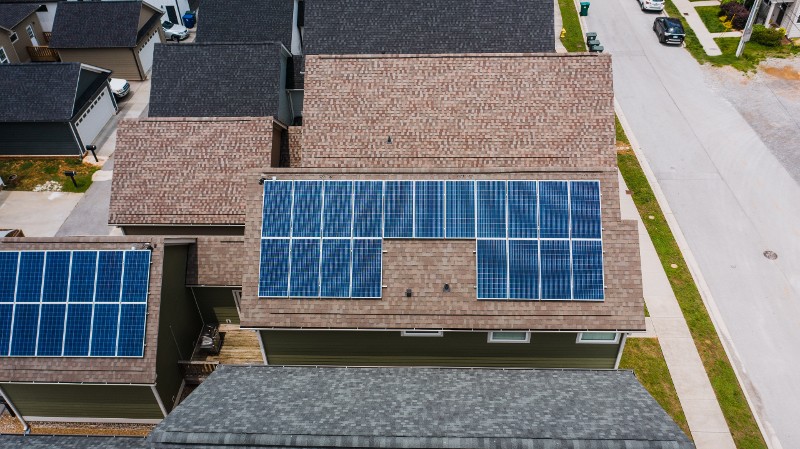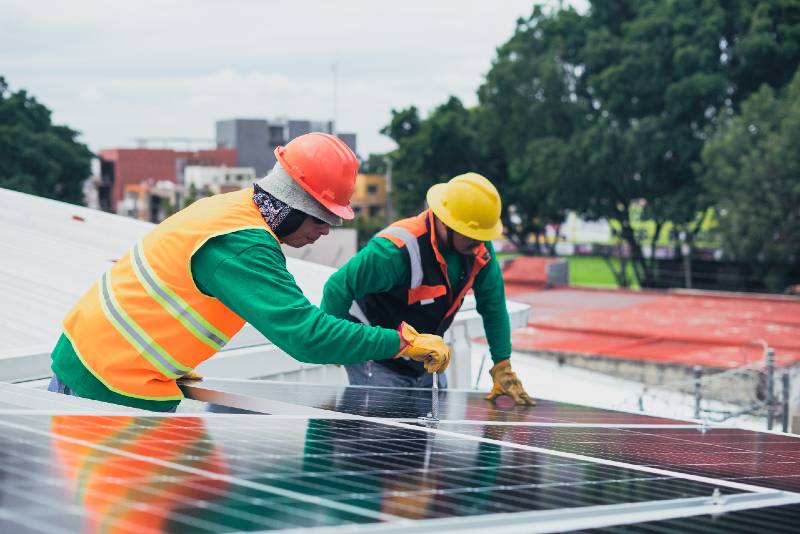Right now, there are over 3,233,623 Tesla electric vehicles on the road.
That’s a lot of batteries that need charging!
And what’s better than using the solar power of the Sun to charge up those batteries?
But here comes the real question, how many solar panels to charge the tesla battery?
The answer varies depending on a lot of factors such as how many miles you travel per day and your Tesla electric car Model.
But on average, you need 10 300W solar panels to charge a Tesla battery.
If you are looking for a more accurate answer that is tailored to your needs, then you are in luck.
In this article, you’ll learn how to design a solar system to charge your Tesla step by step in addition to an estimation of how much this solar system cost and how much money will it save you.
So without further ado, let’s get started!
Key Takeaways
- Most Tesla owners drive about 35 miles per day.
- Tesla electric vehicles consume 280Wh of electricity per mile on average.
- The average Tesla electric car uses around 10kWh of electricity per day.
- To generate 10kWh per day you need a 2-3kW solar system.
- You can’t charge a Tesla with DC current so you need an inverter.
Can You Charge a Tesla with Solar Panels?
Yes, you can charge a Tesla with solar panels.
There are, however, a few things to consider when doing so, such as how much electricity your Tesla needs per day, where you live, and other electrical energy components such as the inverter and the size of your Tesla adapters.
How to Design a Solar System to Charge a Tesla [Step by Step]
1. Calculate How Much Electricity Your Tesla Consumes per Day
The first step in designing any solar system is to know how much power you consume on a daily basis.
In the case of a Tesla, you can easily determine that using the trips feature on the electric car’s dashboard.
Simply tap on the “car icon” on the lower left, then click on “trips”.
This will bring up a list of all your recent trips, along with the total distance and energy consumption for each trip.
From there you can take the average of the total energy consumed per day, and use that as your baseline energy usage.
Note: The bigger the sample, the more accurate your daily energy consumption will be. Ideally, you want to use your energy data for the past year.
Another way to do it is to reset the odometer and drive normally for a week, multiply the odo reading by your average MPGs, then divide that number by 7 to get the average energy usage per day.
Most Tesla owners drive about 35 miles/day and their car uses about 0.28kWh/mile, so that’s approximately 10kWh per day.
2. Calculate the Number of Peak Sun Hours Your Panels Will Receive
The more sunlight your panels will receive, the more energy they will generate.
But as you know, sunlight is not constant throughout the day and different parts of the world receive different amounts of sunlight.
This means that you will need to take both your location and the position of the sun into account when designing your Tesla charging system.
Luckily, you don’t need to do any complex calculations to figure this out.
We use things called peak sun hours, which is the number of hours per day the sunlight intensity averages 1,000W/m².
Without getting into the math here, you can use this handy peak sun hours calculator.
Simply enter your Zip code, hit enter, and you will get the average number of peak sun hours for your area.
On average, you should expect 4-6 peak sun hours per day, so let’s just say you live in California and you receive 5.31 of peak sunlight.
3. Calculate The Theoretical Solar Tesla Charger Size
Now that you have both your baseline energy usage (in our case, 10kWh/day) and the peak sunlight hours for your location (5.31), you can use these two numbers to calculate the theoretical size of your solar charging system.
Theoretical Solar Tesla Charge Size (kW) = Energy Usage per Day (kWh) / Number of Peak Sun Hours per Day (h)
In our example, this gives us a theoretical size of 1.9kW or 1900W.
4. Factor in Power Losses
In a perfect world, the 1.9kW solar system should be enough to provide you with ~10kWh per day (35 miles).
But we don’t live in a perfect world.
For example, if it’s too hot outside, your panels may not be as efficient and you will end up losing a certain amount of solar power due to heat.
Shading can also prevent your panels from performing at their peak solar panel efficiency and if your panels don’t have a bypass diode, your system might not generate any electricity at all.
This in addition to many more factors could cause your panels to generate much less solar power than their theoretical maximum potential.
So, it’s always a good idea to apply a 10-30% safety factor to account for any potential power losses.
Real Solar Tesla Charger Size (kW) = Theoretical Solar Tesla Charger Size (kW) x [1 + Safety Factor]
So, let’s say you want to be safe and decide on a 20% safety factor.
Your real solar Tesla charging system size would be calculated as follows:
Real Solar Tesla Charge Size (kW) = 1.9 x [1 + 0.2] = 2.28kW or 2300W.
5. Calculate the Number of Solar Panels
Solar panels are rated in watts (W).
A 100W solar panel means that this panel will produce 100Wh of energy for every peak sun hour it receives (that’s why we use peak sun hours in our calculations).
Now, commercial solar panels are available in many different sizes, ranging from 10W-400W per panel.
So how many solar panels would you need to charge a Tesla?
Number of Solar Panels (n) = Solar Panel Size (W) / Power Rating of the Panel (W)
Assuming you use a 300W panel in your calculation, this would give you the following:
Number of Solar Panels (n) = 2300 / 300 = 7.7
So you would need 7-8 300W solar panels to charge your Tesla.
6. Calculate the Battery Capacity (Optional)
If you have an off grid solar panel system (solar panels + battery) then you will need to account for the extra solar panels you just added to your system (an additional 10kWh per day that needs to be stored somewhere).
Solar Battery Capacity (Ah) = Energy Usage per Day (Wh) / Solar Battery Nominal Voltage (V)
So if our solar battery is 24V, then the battery capacity would be:
Solar Battery Capacity (Ah) = 10,000 / 24 = 416Ah.
If you have a grid-tied or planning to have one, then you don’t need a battery since all the energy that you aren’t currently using is fed directly to the grid (you are using the grid as your battery).
7. Calculate the Charge Controller Size (Optional)
Again, if you intend to use a battery, you will also need to calculate the charge controller size.
A charge controller is basically a device that ensures your battery gets charged properly and protects it from overcharging.
Charge Controller Size (A) = Solar System Size (W) / Battery Nominal Voltage (V)
Since most battery banks in a solar panel system are 24V, you can use the same calculation as above and get:
Charge Controller Size (A) = 2300 / 24 = 96A.
So, you would need to use at least a 100A charge controller in order to ensure that your battery is properly charged and protected.
It’s important to mention that the charge controller size mainly depends on your solar system configuration (series and/or parallel), so for a more accurate estimate, you can use this solar charge controller calculator.
8. Calculate the Inverter Size
Now, it’s possible to charge your Tesla with DC current (that’s what the supercharge stations use) but to do that you must bypass the internal charging power supply and there is no “feasible” device on the market that can do that.
So you need an inverter to convert the DC current from the solar panels to the AC current that your Tesla can use.
As a general rule of thumb, your inverter size should be similar to your solar system’s DC rating.
So for a 2.3kW solar system, you would need an inverter of at least 2kW as well.
How Many Solar Panels to Charge a Tesla Model S?
Scenario 1:
- Average Energy Consumption per Mile: 290Wh/mi
- Average Miles Travelled per Day: 50 miles
- Location: Texas, USA
- Power Loss: 15%
- Solar Panel Wattage: 300W
OK, so in this scenario, we have a Model S with an average energy consumption per mile of 290Wh and we are assuming that the electric car drives 100 miles every day (we will use this as our baseline).
Let’s do the calculation:
First, we need to calculate the total daily energy usage:
Total Daily Energy Usage = 290Wh/mi x 50 mi = 14500Wh or 14.5kWh.
Next, we need to know the number of peak sun hours your home will get on a typical day.
Using the peak sun hours map, Texas gets an average of 5.32 peak sun hours per day.
The next step is to calculate the size of the solar array we need:
Solar Array Size = Total Daily Energy Usage / Peak Sun Hours per Day.
So, Solar Array Size (Watts) = 14500Wh / 5.32 = 2725W or 2.7kW.
Assuming a 15% power loss, we would need approximately 3.15kW (2.7 x 1.15) of solar panels.
Since we’ll be using 300W solar panels, then we would need at least 11 solar panels to charge your Tesla Model S.
How Many Solar Panels to Charge a Tesla Model 3?
Scenario 2:
- Average Energy Consumption per Mile: 240Wh/mi
- Average Miles Travelled per Day: 70 miles
- Location: Norway
- Power Loss: 20%
- Solar Panel Wattage: 250W
The second scenario is for our Tesla Model 3 owners in Norway.
At 240Wh/mi and 70 miles traveled per day, we would need to use the same calculation as above:
Total Daily Energy Usage = 240Wh/mi x 70 mi = 16800Wh or 16.8kWh.
Now, we need to calculate the peak sun hours for your location.
The average solar irradiance in Norway is 4.27 peak sun hours per day.
Solving our formula:
Solar Array Size (Watts) = 16800Wh / 4.27 = 3934W or 4kW (rounded to the nearest watt).
With 20% power loss, we would need at least 4.8kW (4 x 1.20).
And since we’ll be using 250W solar panels, then we would need 19-20 solar panels to charge your Tesla Model 3.
How Many Solar Panels to Charge a Tesla Model X?
Scenario 3:
- Average Energy Consumption per Mile: 335Wh/mi
- Average Miles Travelled per Day: 40 miles
- Location: California
- Power Loss: 10%
- Solar Panel Wattage: 200W
Now it’s time for Model X.
At 335Wh/mi and 40 miles traveled per day, we would need to use the same calculation as above:
Total Daily Energy Usage = 335Wh/mi x 40 mi = 13400Wh or 13.4kWh.
The next step is to calculate the peak sun hours for your location.
According to this solar irradiance map, California has an average of 5.31 peak sun hours per day.
So, Solar Array Size (Watts) = 13400Wh / 5.31= 2523W or 2.5kW (rounded to the nearest watt).
With 10% power loss, we would need at least 2.8kW (2.5 x 1.10).
And since we’ll be using 200W solar panels, then we would need 14 solar panels to charge your Tesla Model X.
How Many Solar Panels to Charge a Tesla Model Y?
Scenario 4:
- Average Energy Consumption per Mile: 280Wh/mi
- Average Miles Travelled per Day: 60 miles
- Location:
- Power Loss: 25%
- Solar Panel Wattage: 200W
Now let’s take a look at our Model Y owners in Arizona.
At 280Wh/mi and 60 miles traveled per day, we would need to use the same calculation as above:
Total Daily Energy Usage = 280Wh/mi x 60 mi = 16800Wh or 16.8kWh.
The next step is to calculate the peak sun hours for your location.
According to this solar irradiance map, Arizona has an average of 5.62 peak sun hours per day.
So, Solar Array Size (Watts) = 16800Wh / 5.62= 2989W or 3kW (rounded to the nearest watt).
With 25% power loss, we would need at least 3.75kW (3 x 1.25).
And since we’ll be using 200W solar panels, then we would need 18-19 solar panels to charge your Tesla Model Y.
How Many Solar Panels to Charge a Tesla Cybertruck?
Scenario 4:
- Average Energy Consumption per Mile: 415Wh/mi
- Average Miles Travelled per Day: 80 miles
- Location: Australia
- Power Loss: 12%
- Solar Panel Wattage: 400W
Lastly, let’s take a look at our Cybertruck owners in Australia.
At 415Wh/mi and 80 miles traveled per day, we would need to use the same calculation as above:
Total Daily Energy Usage = 415Wh/mi x 80 mi = 33200Wh or 33.2kWh.
Next, we need to calculate the peak sun hours for your location.
According to this solar irradiance map, Australia has an average of 6.21 peak sun hours per day.
So, Solar Array Size (Watts) = 33200Wh / 6.21 = 5346W or 5.4kW (rounded to the nearest watt).
With 12% power loss, we would need at least 6kW (5.4 x 1.12).
And since we’ll be using 400W solar panels, then we would need 15 solar panels to charge your Tesla Cybertruck.
What Does It Cost to Charge a Tesla With Solar?
As we speak, the average cost per watt for solar is around $2.15 (after tax credit).
So for a 3kW solar system, you would need to spend around $6,450.
But keep in mind that this price will vary depending on the size and type of solar panels you choose.
Additionally, the cost of solar panels may also vary depending on where you live and your electricity rates.
How Much Money Can You Save by Charging Your Tesla with Solar Panels?
With the average cost of electricity being $0.166/kWh and assuming your tesla consumes about 15kWh per day, you can expect to save $909 per year or $22,736 over your solar system’s lifetime.
FAQs
How Long to Charge a Tesla With Solar Panels?
On average, you should expect your residential solar panels to fully charge your solar panels within 20-40 hours.
Can You Charge a Tesla With Portable Solar Panels?
No, you can’t charge a Tesla with portable solar panels because Tesla electric vehicles have an internal charging battery power supply that only accepts AC current, and portable solar panels output DC current.
Last Words
Charging a Tesla with solar panels is the ideal way to reduce your carbon footprint, minimize your energy costs, and generate clean, renewable energy.
Whether you own a Model X, Model Y, or Cybertruck, charging your Tesla with solar panels is definitely worth considering!
What other questions do you have about charging a Tesla with solar panels? Let us know in the comments!

